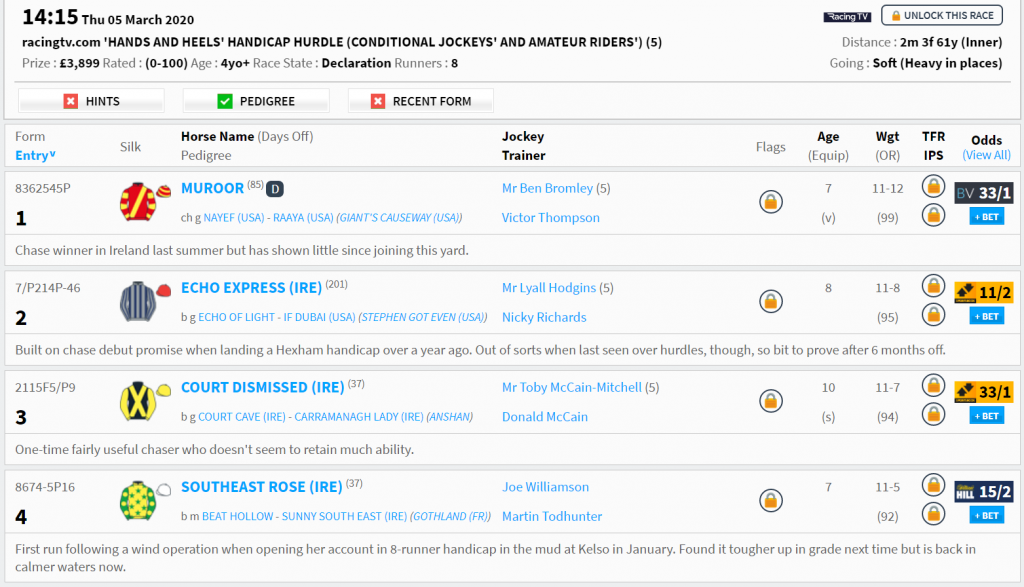
This section features soccer corners betting strategies by our specialist, Liam Johnson. All corner predictions you find here at WhichBookie are absolutely free.
When choosing a horse to wager on, a racecard becomes indispensable, offering crucial details about each competitor. Yet for newcomers, these cards can seem quite perplexing at first glance.
In this piece, we'll delve into the components of a racecard, demystifying the information they present.
It's important to know that racecards come in various formats. While they generally share similar data, the display can differ depending on the source. Gaining a grasp of what each section presents will make navigating them far simpler.
We'll use today's horse race as a reference point for examining a typical racecard. Click the image to enlarge it.

The racecard opens with specifics about the event itself, including:
Following the race details, the lineup of competing horses is listed. Each horse's likelihood of victory is informed by several indicators that follow.
You'll notice a large, prominent number representing the horse's assigned race number found on its saddlecloth. This is sorted by weight, with the heaviest horse often being number 1.
Adjacent to the horse's race number is a sequence of figures and letters. These are the horse's form indicators, detailing past performances, with the latest result on the far right. Letters correspond to specific race incidents noted below.
Many racecards include visuals of the jockey’s distinctive attire. Recognizing these can help spot your chosen horse during the race. streaming horse racing live .
Below the jockey's colors, the horse’s lineage is provided. This breeding information can be critical for gauging the potential of a horse based on familial successes.
Beside each horse's name, you'll see a numerical figure indicating days since the last race. Sometimes an additional number denotes a different race type, like a jump versus a flat race.
Details about not only the horse's rider but also the owner appear next. An apprentice jockey might ride with a weight allowance, reflected in a number by their name.
The Age section lists the horse’s age, typically with a marking underneath explaining the gear used for the race.
Next, the weight section outlines the total carried by the horse, comprising the rider’s weight and saddle. Additional weights may apply due to race-specific rules or penalties. Weight is expressed in stones and pounds.
Below the horse's weight, the official rating is available. Post three runs, a horse receives a rating that adjusts based on its subsequent performance. This rating impacts race eligibility and carried weight, although some sites provide their unique ratings too.
The odds for each horse to win, as per the bookmaker, are presented last. Since these may not be the most competitive, checking around for better options is advisable before betting. Additional options for the race might be available, so keep that in mind. betting offers The illustrated example concerns a jumps horse racecard. For flat races, starting stall numbers (draw) are also shown. Position in certain stalls can confer advantages due to course configuration.
At WhichBookie, we commit to offering premium content and deals daily. Note that we receive compensation from some links herein.
